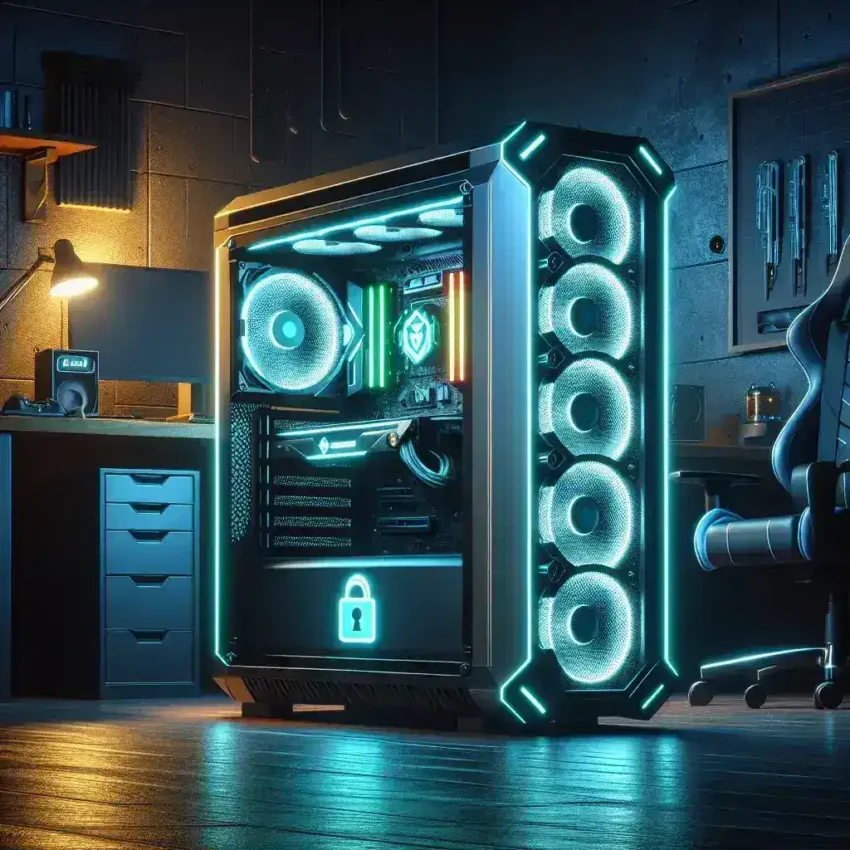In the realm of PC gaming, technology advances at a rapid pace. One of the significant innovations is hardware-level Digital Rights Management (DRM) protection. This technology has emerged as a pivotal development for ensuring the security and integrity of gaming content. But what exactly is hardware-level DRM protection, and what are its benefits for gaming PCs?
Understanding Hardware-Level DRM Protection
Hardware-level DRM protection refers to security measures embedded directly into the hardware components of a gaming PC, such as the CPU or GPU. Unlike software-based DRM, which relies on applications to enforce rights management, hardware-level DRM offers a more robust and tamper-resistant solution. This technology is designed to prevent unauthorized copying, sharing, and usage of digital content, ensuring that only legitimate users can access it.
Key Benefits of Hardware-Level DRM Protection
- Enhanced Security: Since DRM is built into the hardware, it is much harder for hackers to bypass or disable security features. This added layer of protection helps safeguard intellectual property and sensitive data.
- Improved Performance: Hardware-level DRM can offload some of the processing tasks from the CPU to dedicated security hardware, which results in better overall system performance and smoother gaming experiences.
- Better User Experience: With DRM capabilities integrated into the hardware, users experience fewer disruptions and issues related to DRM verification and enforcement. This creates a more seamless and enjoyable gaming experience.
- Support for High-Quality Content: Content creators are more likely to release high-quality, AAA titles on platforms that offer robust DRM protection, knowing their work will be secure from piracy.
- Legal Compliance and Licensing: Ensuring that only authorized users can access and use digital content helps maintain legal compliance and uphold licensing agreements, protecting both developers and users alike.
Performance Comparison: Hardware vs. Software DRM
To better understand the advantages of hardware-level DRM protection, let’s compare the performance differences between hardware and software-based DRM:
| Aspect | Hardware-level DRM | Software-based DRM |
|---|---|---|
| Security | Highly secure, difficult to bypass or tamper with | Less secure, susceptible to hacking and bypassing |
| Performance | Superior performance, offloads tasks to dedicated hardware | Can cause system slowdowns and reduced performance |
| User Experience | Seamless, minimal disruptions | More prone to disruptions and issues |
| Content Quality | Encourages release of high-quality content | Less incentive for creators due to piracy concerns |
| Legal Compliance | Ensures compliance with licensing agreements | More challenging to enforce compliance |
The Impact on Game Developers and Publishers
Game developers and publishers stand to benefit significantly from hardware-level DRM protection. The primary advantage is reduced piracy, which translates to higher revenue and a healthier gaming ecosystem. Since the risk of unauthorized access and distribution is minimized, developers can focus on creating more innovative and higher-quality games without fear of substantial revenue loss.
Additionally, hardware-level DRM protection fosters a stable market for developers and publishers, encouraging them to invest further in research and development. This leads to cutting-edge gaming experiences and advancements in gaming technology.
Case Study: Implementation Success
To illustrate the benefits, consider a well-known gaming publisher that implemented hardware-level DRM protection for one of its flagship titles. Post-implementation, the company observed a significant reduction in piracy rates and an increase in legitimate sales. This allowed the publisher to allocate more resources toward enhancing game features and expanding content, ultimately resulting in a richer gaming experience for users.
Consumer Perspective
From a consumer standpoint, gaming PCs with hardware-level DRM protection offer numerous advantages. One key benefit is the assurance that the content they purchase is legitimate and secure. Additionally, with fewer resources spent on combating piracy and more on improving games, players enjoy higher quality and more feature-rich content.
Moreover, streamlined DRM processes mean fewer interruptions during gameplay. Gamers can dive into their favorite titles without encountering frequent verification checks, leading to a more immersive experience.
Addressing Concerns
While there are many benefits, some consumers may have concerns about privacy and control over their devices. It’s crucial for manufacturers and developers to transparently communicate how hardware-level DRM works and ensure that user privacy is respected. By building trust and providing clear information, these concerns can be mitigated effectively.
Future Prospects
The future of gaming PCs with hardware-level DRM protection is promising. As technology continues to evolve, we can expect even more sophisticated and secure DRM solutions. Further integration with emerging technologies such as AI and machine learning may enhance the effectiveness of DRM, providing real-time protection and adaptive responses to security threats.
Incorporating blockchain technology could also revolutionize DRM by enabling transparent and immutable records of ownership and access rights, further securing digital content.
With ongoing advancements, we can look forward to a gaming ecosystem where security and performance go hand-in-hand, offering the best possible experience for both gamers and developers.
Conclusion
Gaming PCs with hardware-level DRM protection present a host of benefits, from enhanced security and improved performance to a better user experience and legal compliance. By investing in this advanced technology, the gaming industry can continue to thrive, ensuring that both developers and players reap the rewards of a secure and innovative gaming environment.

